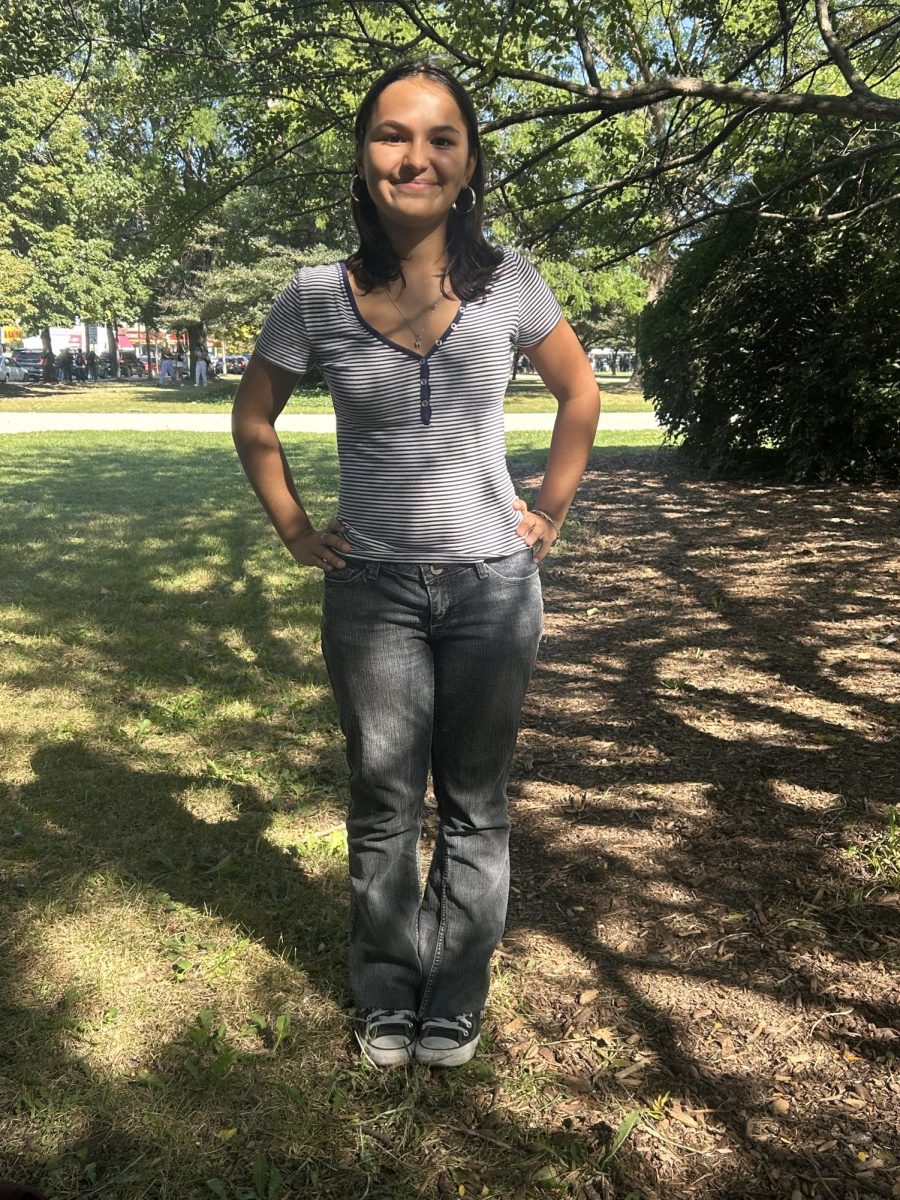By Grace Kerpan
Freshman year: graphic tees and skinny jeans. Senior year: wide leg trousers and an Oxford shirt. An unexpected, yet common evolution of style many Lane students go through in high school.
Senior year and even junior year are the times when most students realize what it means to be mature and start becoming true adults. Manners and style seem to follow the same timeline.
“People expect a more mature behavior from me because of the way I dress, but it also helps me act more mature because I respond to my surroundings. They set the bar as to what’s expected,” said Vivian Nguyen, Div. 276. “My style is an outward display of my personality and it represents me as a person. If I want to be seen as an adult, I should look and act like an adult.”
College and future careers can also hinder change in the style of certain students, like with Demi Richardson, Div. 383.
“It’s like, the older I get, the more I focus on more important things and fashion in high school is not nearly as important as getting a job or [into] college,” Richardson said.
Richardson prefers a milder wardrobe with neutral colors in her junior year as opposed to her bright and colorful freshman look.
“Now it’s more simple colors and being relaxed. I like to be comfortable and wear neutral colors, not just because they’re in style, but because I’m not trying extremely hard to dress up in the morning. I like the effortless look, I don’t really care about impressing people,” said Richardson.
Meeting new people and learning about style was the turning point for Jeremy Carr, Div. 374.
“Freshman year, I barely had a style. I used to wear like sweatpants and occasionally jeans to school,” said Carr, “Now, I have a sense of what style is and I’ve evolved a lot. I go for clothes that catch my eye and will go with my wardrobe.”
Carr’s mother also played a role in his style transformation. She worked for J.Crew and received discounts on the clothes available at the retailer.
“I started liking stuff from there and branched off to other stores and types of wardrobes,” said Carr.
The change in style isn’t always as dramatic for other students. Stephanie Harnett, Div. 274, still abides by the comfy look, but tries to dress it up a little more now.
“My style outlook hasn’t changed much, but I do try to put in a little more effort now. I try to dress up my ‘bum swag.’ I throw on some leggings, maybe some boots and a hoodie. I keep it very simple,” said Harnett.
Students want to look like an adult and be treated like an adult, and their style is one of the most important indications of maturity.
“I just want to look older, like I know what I’m doing. I don’t follow trends, I’m just chilling and living life but I want to be treated like more of an adult,” said Cooper Chambers-Hines, Div. 363.
The specific changes vary amongst students, but the outcome is similar for each young adult – simplicity.
As most students begin to dress in simpler fashion, they begin picking classic pieces in neutral colors. With these style changes, their looks become more mature.
Personal style is also the outward expression of one’s own personality; clothes reveal a lot about the person wearing them. The classic and elegant style is more commonly associated with a sophisticated and respected individual.
The evolution of a student’s aesthetic is one of the many changes that comes along as high school progresses, but it’s one of the most important. A mature teen commands respect, even from adults, so presenting oneself professionally is a key development in that direction.





